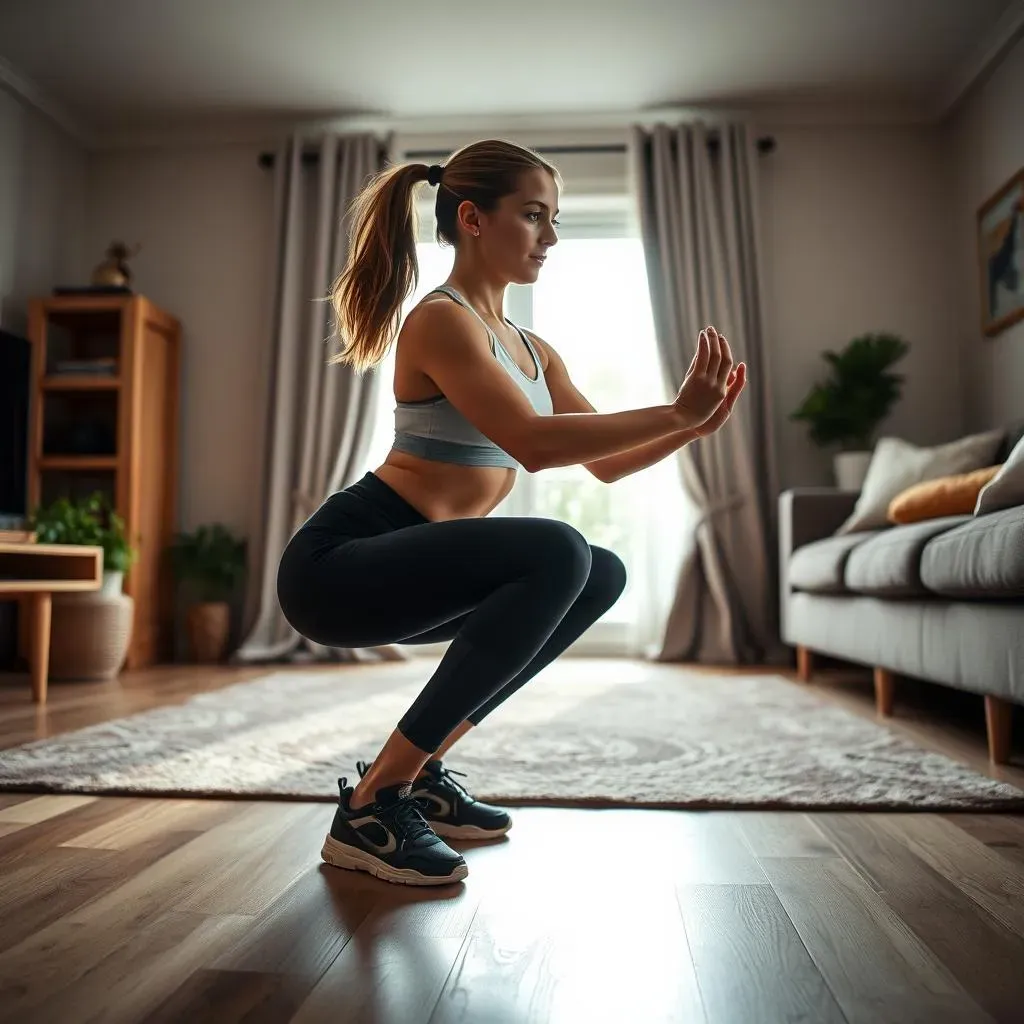Table of Contents
Tired of skipping leg day because you can't make it to the gym? What if I told you that you could get a killer leg workout right in your living room, with zero fancy equipment? That's right, we're talking powerful leg workouts at home without equipment. This isn't about some wimpy, feel-good session either. We're diving into exercises that'll challenge your muscles, build strength, and leave you feeling the burn. We'll explore three killer ways to train your legs: bodyweight moves that use your own resistance, how to add some extra spice with resistance bands, and how to mix these two for maximum results. We’ll look at squats, lunges, and a few other moves that will give you a solid foundation. I'm not going to lie, some of these will make you sweat, but I promise it's worth it. So, ditch the excuses, find some space, and let’s get those legs working. This article is your guide to building strong, toned legs without ever stepping foot in a gym.
Home Leg Workouts: No Equipment Needed
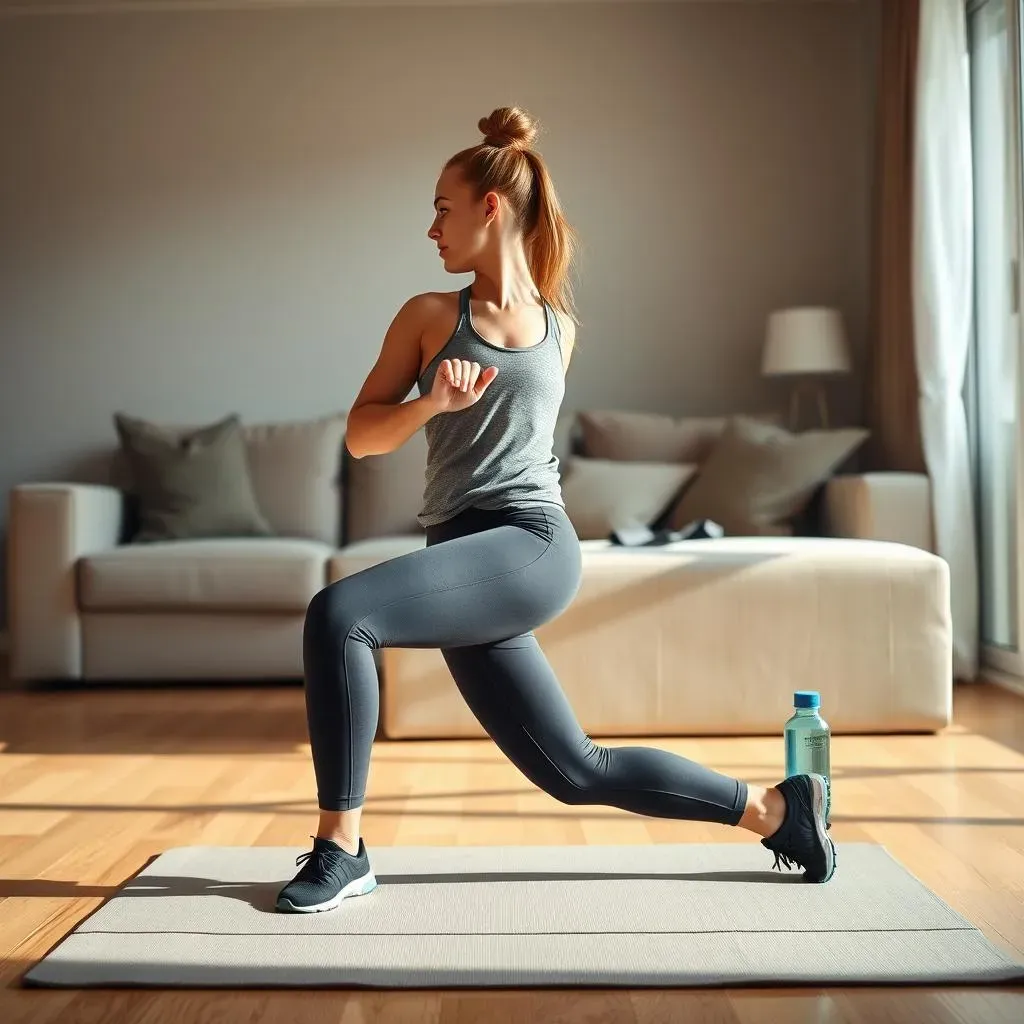
Home Leg Workouts: No Equipment Needed
Why Bodyweight Training Rocks
Okay, so you're thinking about skipping the gym, but still want to get those legs strong? I get it. The good news is, you absolutely can build some serious lower body strength without any fancy machines. Bodyweight training, my friend, is where it's at. It's not just about doing a few squats and calling it a day. It's about using your own resistance to challenge your muscles, build endurance, and get stronger. Think of it like this, you're your own gym, and your body is the only equipment you'll ever need. The beauty of it all is that you can do it anywhere, anytime, no excuses.
And honestly, it's not just for beginners. Even seasoned athletes use bodyweight exercises to maintain strength and improve performance. It’s a fantastic way to learn how your body moves and to build a solid foundation for more advanced exercises later on.
Essential Moves for Leg Day
So, what are these magical moves, you ask? Let's start with the basics. We're talking squats, lunges, and glute bridges. These are the bread and butter of any solid leg workout. Squats are fantastic because they hit multiple muscles at once, like your quads, glutes, and hamstrings. Lunges are great for building balance and working each leg individually, which is super important. And glute bridges? Well, those are your glutes' best friends.
Don't underestimate the power of these simple moves. They're not just about going through the motions. Focus on proper form, control your movements, and really engage your muscles. You should feel the burn by the last few reps, and that's how you know you're doing it right.
Exercise | Muscles Worked | Why It's Great |
|---|---|---|
Squats | Quads, Glutes, Hamstrings | Builds overall leg strength |
Lunges | Quads, Glutes, Hamstrings | Improves balance, works each leg |
Glute Bridges | Glutes, Hamstrings | Strengthens your butt and lower back |
Progression and Consistency is Key
Now, you're not going to go from zero to hero in a day. It's all about progression. Start with a number of reps that's challenging but doable, and then gradually increase the number as you get stronger. Maybe you start with 3 sets of 10 squats, and after a week, you're up to 3 sets of 15. The key is to be consistent. Try to fit in at least two to three leg workouts each week. I know life gets busy, but even 20-30 minutes can make a big difference.
Remember, you don't need to spend hours in the gym to see results, and you don’t need a gym to be effective. Small, consistent actions are way better than sporadic bursts of energy. It’s also important to listen to your body. If something doesn’t feel right, don’t push it. Rest and recovery are just as important as the workout itself. So, find a routine that works for you and stick with it!
Bodyweight Leg Exercises for Strength
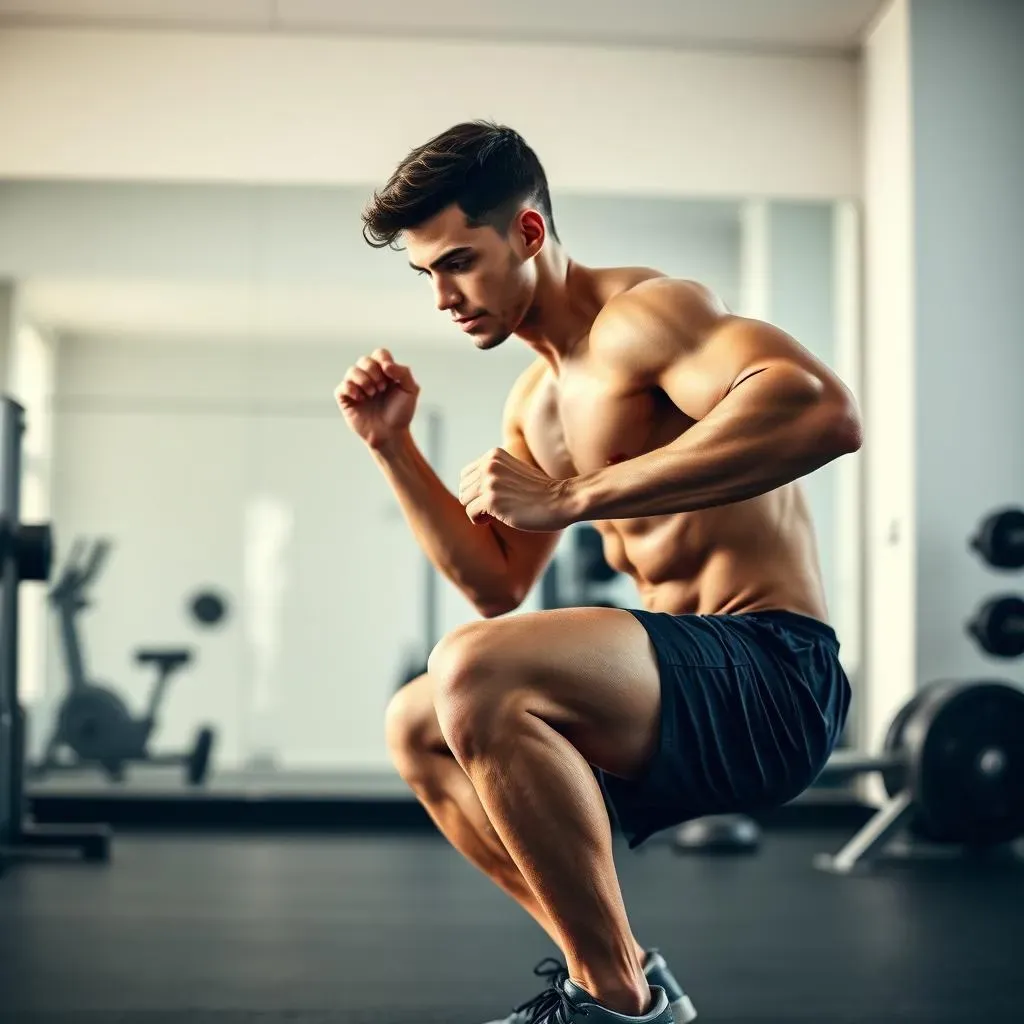
Bodyweight Leg Exercises for Strength
Level Up Your Leg Game
Alright, so you've got the basics down, and you're ready to push past simple squats and lunges. That’s awesome! It's time to kick it up a notch with some more challenging bodyweight moves. We’re talking about exercises that will not only build strength but also improve your balance and coordination. Think of it as adding some extra spice to your leg day routine. These aren't just about making your legs look good, they're about making them function better, too.
You'll start to see that bodyweight training isn’t just about doing the same old moves. It’s about finding creative ways to challenge your body with just your own weight. We're going to explore some of my favorites, that will make you feel like you're working out with a personal trainer even when you are alone at home.
Advanced Bodyweight Moves
Ready to level up? Let's talk about single-leg squats, pistol squats, and jump squats. Single-leg squats, also known as pistol squats, are a beast of an exercise. They demand serious strength, balance, and control. If those are too tough at first, just start with assisted single leg squats by holding on to a chair or wall. Jump squats are another great way to work your leg muscles. They add an element of explosive power that can translate to more dynamic movements in your daily life.
These moves aren’t just for show, they are designed to push your muscles, and are great for building strength, and improving your overall fitness. Remember, it's not about doing the most reps, but doing the reps with good form. Quality over quantity every time.
Exercise | How to Do It | Why It's Challenging |
|---|---|---|
Single-Leg Squats | Stand on one leg, lower into a squat | Requires balance and strength |
Jump Squats | Squat down, jump up explosively | Adds power and intensity |
Putting it All Together
So, how do you actually incorporate these advanced moves? Start by mastering the basic moves first. Then, gradually introduce the more challenging exercises. For example, if you can do 3 sets of 15 squats with good form, try adding in 3 sets of 8-10 jump squats. If single leg squats are too difficult, try assisted single leg squats, or focus on step ups. You can also try negative single leg squats, where you lower yourself slowly on one leg and then use both legs to stand up.
The key is to listen to your body and not push yourself too hard too quickly. It’s okay to start slow and gradually increase the challenge. And remember, consistency is key. The more you stick with it, the stronger you’ll become. I know it might seem hard at first, but trust me, the results are worth it.
Resistance Band Leg Workouts at Home
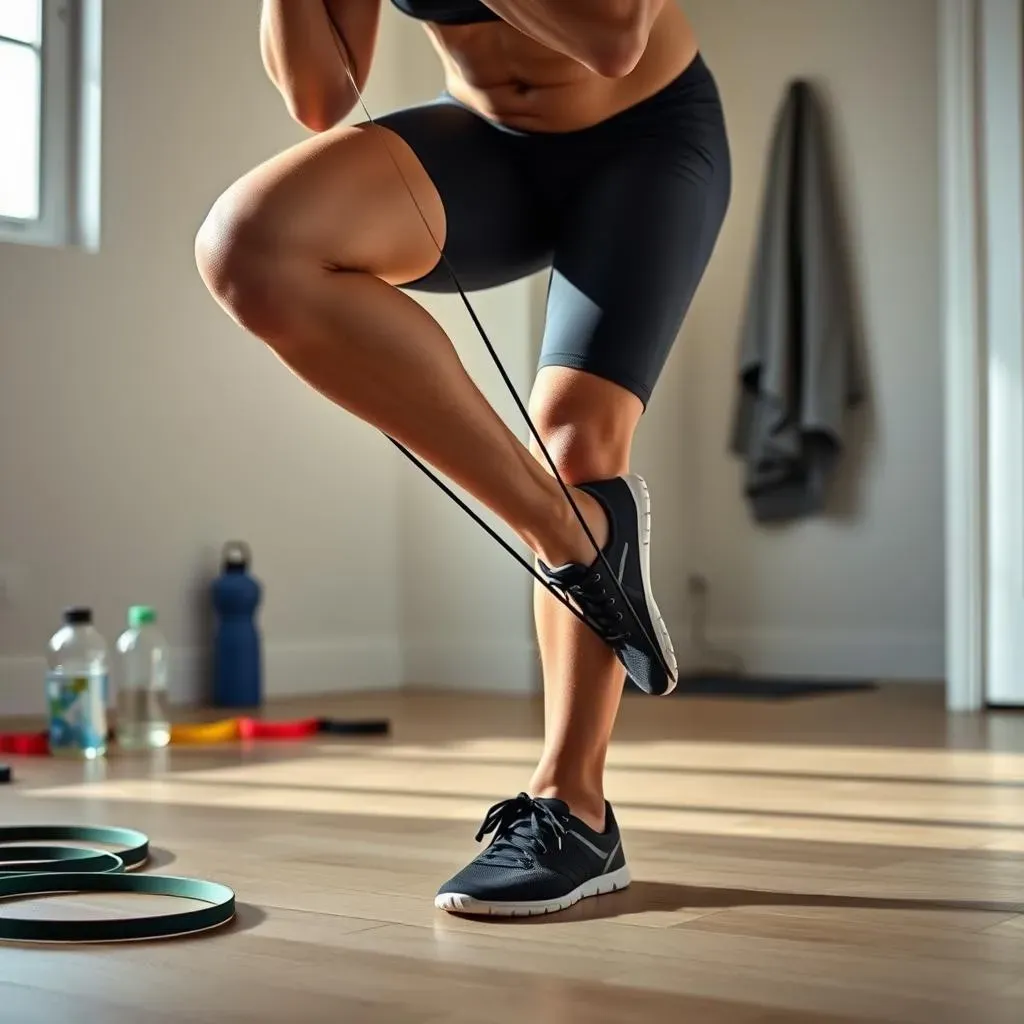
Resistance Band Leg Workouts at Home
Why Resistance Bands are a Game Changer
Okay, so you're rocking the bodyweight moves, but you want to add a little extra oomph? That's where resistance bands come in. These little guys are like mini portable gyms. They're cheap, they're easy to store, and they can seriously level up your leg workouts at home. Think of them as the secret weapon in your fitness arsenal. They provide a different kind of resistance than bodyweight alone, which can help you build strength in new ways and target muscles more effectively. I've been using them for years, and I’m always surprised by how much of a difference they can make.
What I love about resistance bands is their versatility. You can use them for so many different exercises, and you can adjust the intensity by changing the band's resistance or the way you use it. They're also great for people of all fitness levels, whether you're a beginner or a seasoned athlete.
Benefit | Why It Matters |
|---|---|
Versatility | Use them for many exercises |
Adjustable Intensity | Change resistance to suit your needs |
Portability | Easy to take anywhere |
Key Resistance Band Exercises for Legs
So, what are the best resistance band exercises for your legs? Let's start with squats. By placing the band around your thighs, you can add resistance and improve your glute activation. Then we have lunges. Try stepping into the band and performing lunges to further engage your leg muscles. Don't forget about glute bridges, the resistance band around the thigh will make them even more challenging.
These exercises target all the major leg muscles, including your quads, hamstrings, and glutes. The resistance bands add an extra layer of intensity, making your muscles work harder and resulting in more gains. Remember to focus on form and control. It’s not about cranking out reps quickly, but about performing each rep with precision.
Putting it All Together
Now, how do you incorporate these resistance band exercises into your workouts? It's simple. You can start by adding them to the basic bodyweight exercises we talked about earlier. For instance, do a set of squats without the band, then do a set with the band. You can also try doing a full workout that utilizes only resistance bands. Start with a few sets of 10-15 reps for each exercise and gradually increase the number of reps or sets as you get stronger.
The great thing about resistance bands is that you can easily adjust the intensity by changing the band's resistance. Start with a lighter band and work your way up to a heavier one as you get stronger. Remember, consistency is key. The more you stick with it, the more progress you’ll see. You don’t need a fancy gym to get a great workout; you just need a good plan and some resistance bands.
Combining EquipmentFree Leg Workouts for Best Results
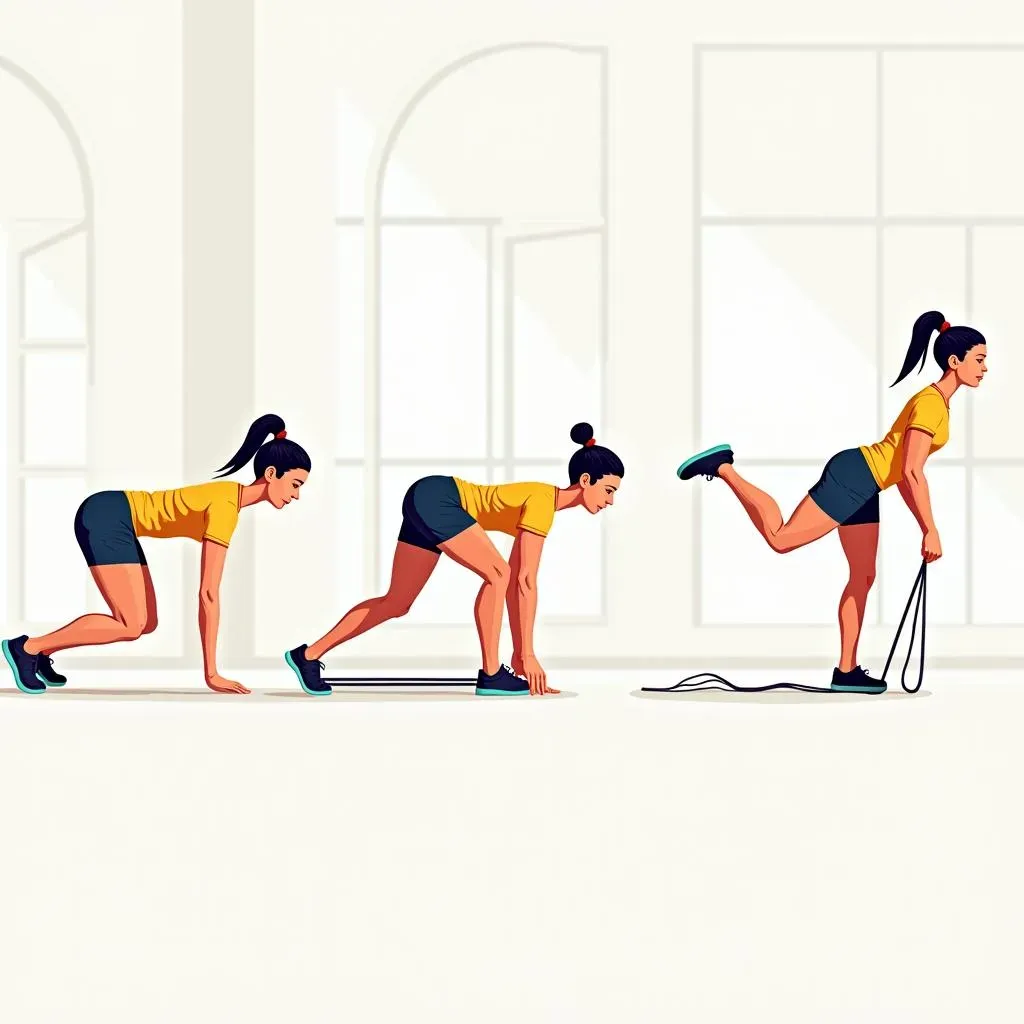
Combining EquipmentFree Leg Workouts for Best Results
The Power of Variety
Okay, so you've got the bodyweight moves down, you've experimented with resistance bands, but what's the secret sauce to really maximize your leg gains at home? It's all about combining these methods. Think of it like this: you wouldn’t eat the same meal every day, right? Your body needs variety to keep growing and getting stronger. The same goes for your leg workouts. By mixing bodyweight exercises with resistance band training, you're hitting your muscles from different angles and making them work harder. It’s not just about doing more; it’s about doing it smarter.
Variety is the key to avoiding plateaus. You know, when your progress just seems to stall. By constantly changing up your routine, you're keeping your muscles guessing and forcing them to adapt. This leads to better results, more strength, and a lot more fun. It’s like giving your legs a new challenge every time you work out, which is way more effective than just doing the same old thing.
Creating Your Perfect Leg Workout Plan
So how do you actually put this into practice? It’s easier than you think. Start by planning your weekly workouts. You might do a full bodyweight workout one day, a resistance band focused session another day, and then combine both in a third session. For example, you could start with bodyweight squats, then do some resistance band lunges, and finish off with jump squats. The key is to make sure you are working all the major muscle groups in your legs, not just sticking to one type of exercise.
Also, don't be afraid to get creative. You can mix and match exercises, change the order, or even add some new moves that you find along the way. The most important thing is to find a routine that you enjoy and that challenges you. Remember, consistency is key. Stick with it, and you will see the results you’ve been working towards. Trust me, your legs will thank you for it.
Workout Type | Example Exercises | Focus |
|---|---|---|
Bodyweight | Squats, Lunges, Glute Bridges | Builds foundation strength |
Resistance Band | Band Squats, Band Lunges, Band Glute Bridges | Adds extra resistance |
Combined | Bodyweight Squats + Band Lunges + Jump Squats | Maximizes muscle engagement |
